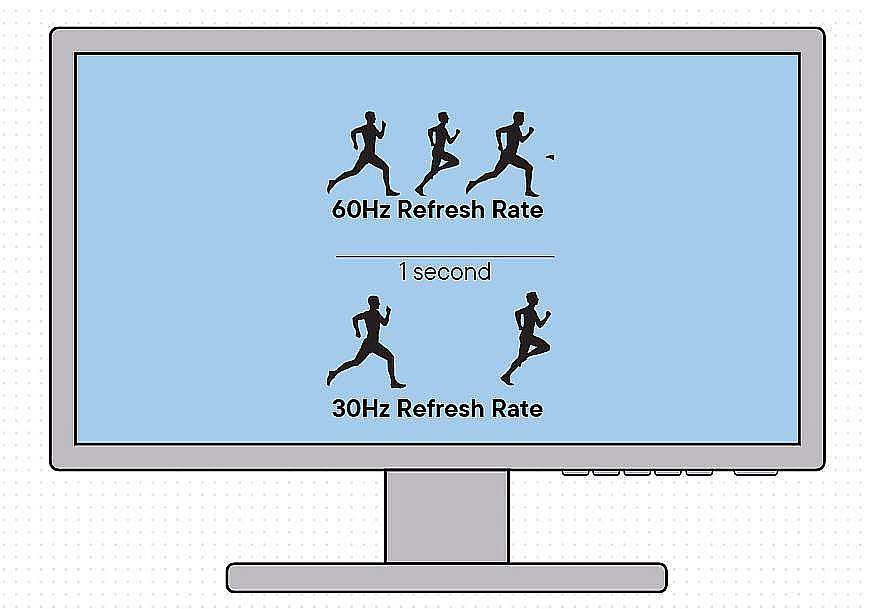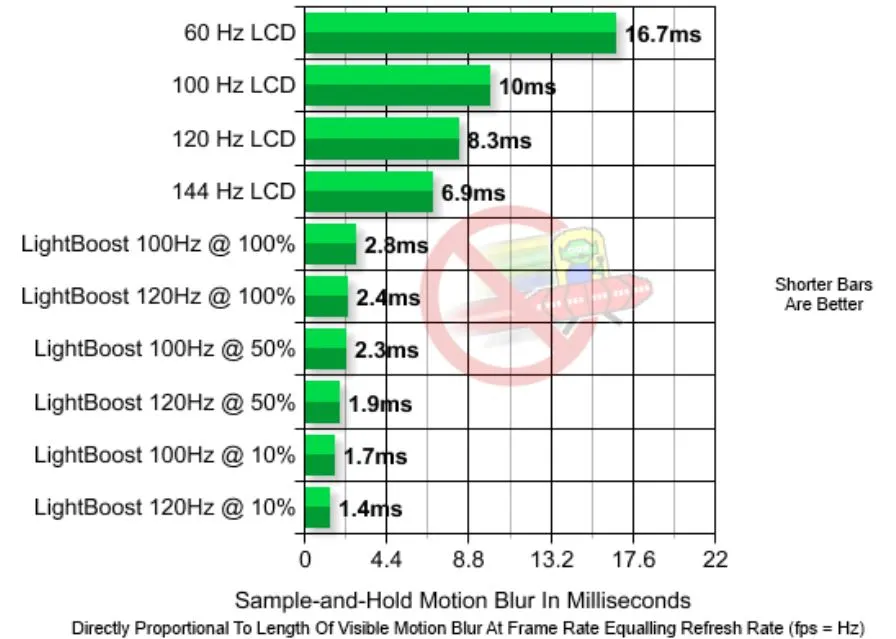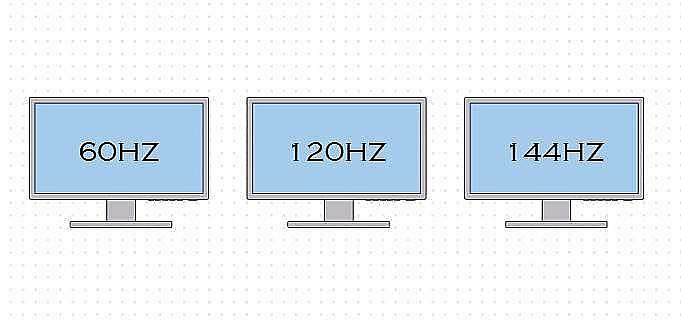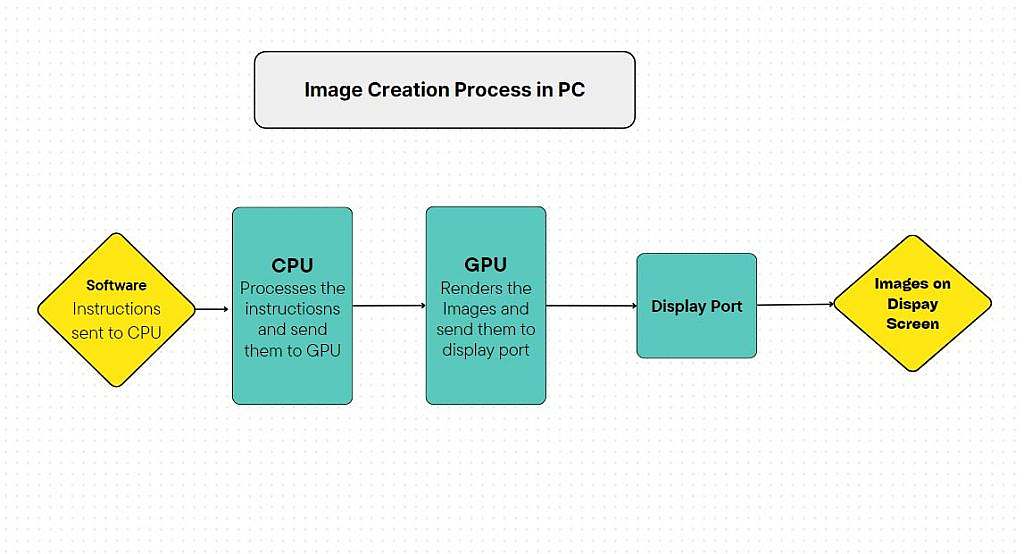The refresh rate refers to how fast images are updated or refreshed on your screen every second. Let’s say images are updated quickly, then everything will look smooth and immersive. Likewise, if the images update slowly, you will have a blurry or choppy visual experience
So, refresh rate is about how fast a picture changes on your screen when playing a game, watching a movie, etc. The refresh rate is measured in Hertz (Hz), and the time interval between updates is measured in milliseconds (ms).
Let us take an example of a gaming monitor with a 240Hz refresh rate, this means that the monitor is refreshing 244 images every second. When such a monitor is paired with a powerful CPU & GPU, the results would be a smoother visual experience with higher FPS (Frames Rate Per Second).

| Refresh Rate (Hz) | Common Use Cases |
|---|---|
| 60 Hz | Office work, general use, basic gaming |
| 75 Hz | Entry-level gaming, productivity |
| 120 Hz | High-end gaming, video editing |
| 144 Hz | Competitive gaming, smoother visuals |
| 240 Hz | Esports, professional competitive gaming |
| 360 Hz | Advanced gaming, esports enthusiasts |
| 480 Hz (Upcoming) | Future gaming, ultra-low latency |
Importance of Refresh Rate
On Visual Performance
According to a study by NVIDIA, higher refresh rates directly improve clarity and minimize motion blur during fast scenes. A display with a refresh rate of 120 Hz or above updates the screen more often, providing sharper visuals, especially during quick transitions (TechRadar, 2021).

A study by Blur Busters illustrates the relationship between refresh rates and motion blur. The graph shows that as refresh rates increase from 60 Hz to 144 Hz, motion blur decreases significantly. This reduction enhances visual clarity during fast-moving scenes. For a detailed view of the graph, refer to Blur Busters’ motion blur comparison.
On Gaming Performance
For gaming, a higher refresh rate is a must for serious players. Refresh rates like 120 Hz or 144 Hz offer a competitive edge. They make every movement fluid, which helps players react faster.

For example, in a first-person shooter, a player with a 144 Hz monitor will see an enemy move more smoothly compared to someone using a 60 Hz monitor, giving them an instant reaction advantage.
Factors Affecting the Refresh Rate
Here are the most important things to consider:
Display Technology:
The primary factor that influences the refresh rate is your display technology. Modern monitors or TVs come with advanced technology to support faster refresh rates.
Keep in mind that you cannot achieve a higher refresh rate with the help of software. The refresh rate depends upon the technology used in your display device. For instance, you should use a gaming monitor with an out-of-the-box 144Hz refresh rate technology.

The panel technology used in manufacturing the display screen impacts the refresh rate. For example, old monitors or LEDs have a slower response time, therefore, you will see sluggish performance even if you pair those technologies with the latest hardware.
On the contrary, modern OLED panels are equipped with the latest technology to provide higher refresh rates, resulting in smoother motion and exceptional visual experience.
Graphics Card:
The second most crucial factor that affects the refresh rate is your graphics card or GPU. A graphics card is responsible for rendering and transferring images to the display screen.
A powerful graphics card would render the images faster and send them to the display panel quickly. In other words, your GPU has to communicate with your display screen in real-time to keep up the higher refresh rate.
CPU:
A faster CPU would quickly process the instructions and send them to the GPU for rendering images. A weak CPU causes both the GPU and display screen to wait for instructions. In this case, you will not achieve the desired refresh rate due to the lack of communication from the CPU.
Choose a CPU with faster single/multicore performance to avoid bottlenecks or stutters.
Please note that the image creation process starts from your CPU that receives the instruction from the software. The CPU then forwards those instructions to your graphics card, which converts those instructions into images. Finally, the rendered images are then sent over to the display screen.

So, if the CPU or GPU is weak, your monitor will struggle to deliver the maximum refresh rate, no matter how advanced its specs are.
What is a Good Refresh Rate?
A good refresh rate entirely depends upon the tasks you interact with. A 60Hz refresh rate monitor is enough for watching videos or browsing the internet,
However, for a competitive gamer seeking a smoother gameplay experience, go with a 120Hz, 144Hz, or 240Hz refresh rate monitor.
Future Trends in Refresh Rates
Emerging display technologies are pushing refresh rates beyond current standards, with developments pointing towards monitors that surpass 360 Hz. These advancements promise to enhance visual clarity and responsiveness even further, benefiting gamers, content creators, and professionals.
Monitors with refresh rates of 480 Hz or higher are already in prototype stages and could soon be commercially available, driven by demand for ultra-low latency and immersive visual experiences.

Mosaab Jamal Ahmed is a seasoned technology enthusiast with a passion for gaming and PC upgrades. His journey began in 1998 with a Pentium 1 PC, igniting his lifelong fascination with computer hardware.
Over the years, Mosaab has honed his skills in upgrading and optimizing PCs with the latest components, ensuring peak performance for gaming and other demanding applications.
Through his insightful articles, Mosaab shares his extensive knowledge on building and enhancing gaming PCs.

